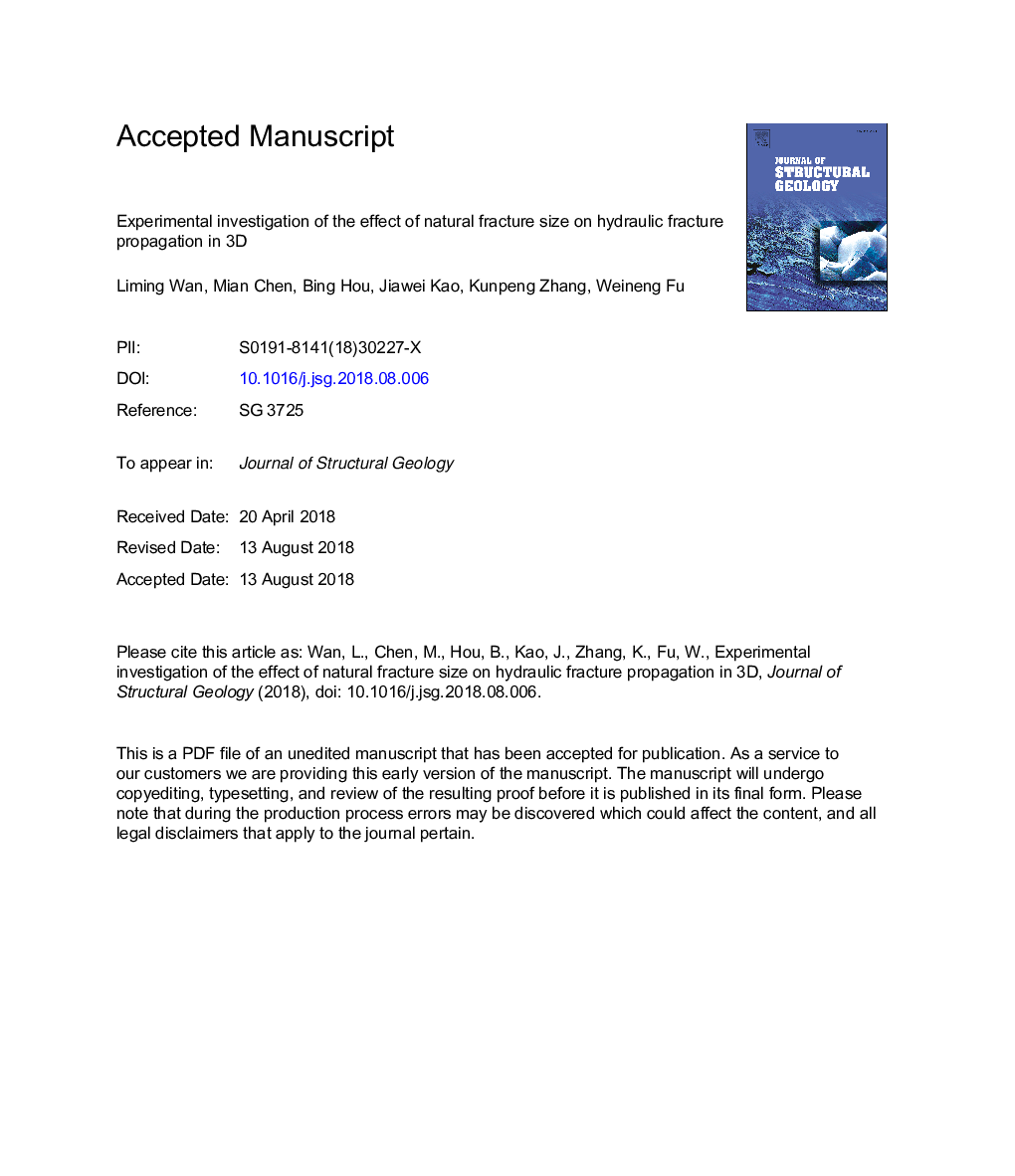| Article ID | Journal | Published Year | Pages | File Type |
|---|---|---|---|---|
| 8946387 | Journal of Structural Geology | 2018 | 40 Pages |
Abstract
The three-dimensional hydraulic fracture (HF) geometry of intersection with the natural fracture (NF) is significant in shale. In this paper, an orthogonal fracture intersection geometry pattern in 3D was proposed, where the size of natural fracture was mainly studied. To verify the accuracy of the geometry pattern, laboratory experiments were conducted separately in hydrostone and shale outcrop using the true tri-axial system. The influence of NF size and bedding planes were investigated. The results show that when HF intersection with different sizes of NF, the fracture propagation can be classified with five ways: arresting, bypassing, diversion, vertical extension, vertical extension and then diversion. When NF size is bigger than that of HF, it is more likely for HF to bypass, when smaller, more likely to diverse or extend vertically. Well-developed bedding planes increase the probability of diversion to form complex fracture network only when the size of NF is big. High fluctuation intensity of pump curve indicates a more complex fracture network. When HF extends vertically, the curve shows an even fluctuation, and when changes direction, the extension pressure will be much higher than fracturing pressure. The 3D pattern and experimental results can predict fracture geometry and detect the fracture network when intersection.
Keywords
Related Topics
Physical Sciences and Engineering
Earth and Planetary Sciences
Geology
Authors
Liming Wan, Mian Chen, Bing Hou, Jiawei Kao, Kunpeng Zhang, Weineng Fu,
